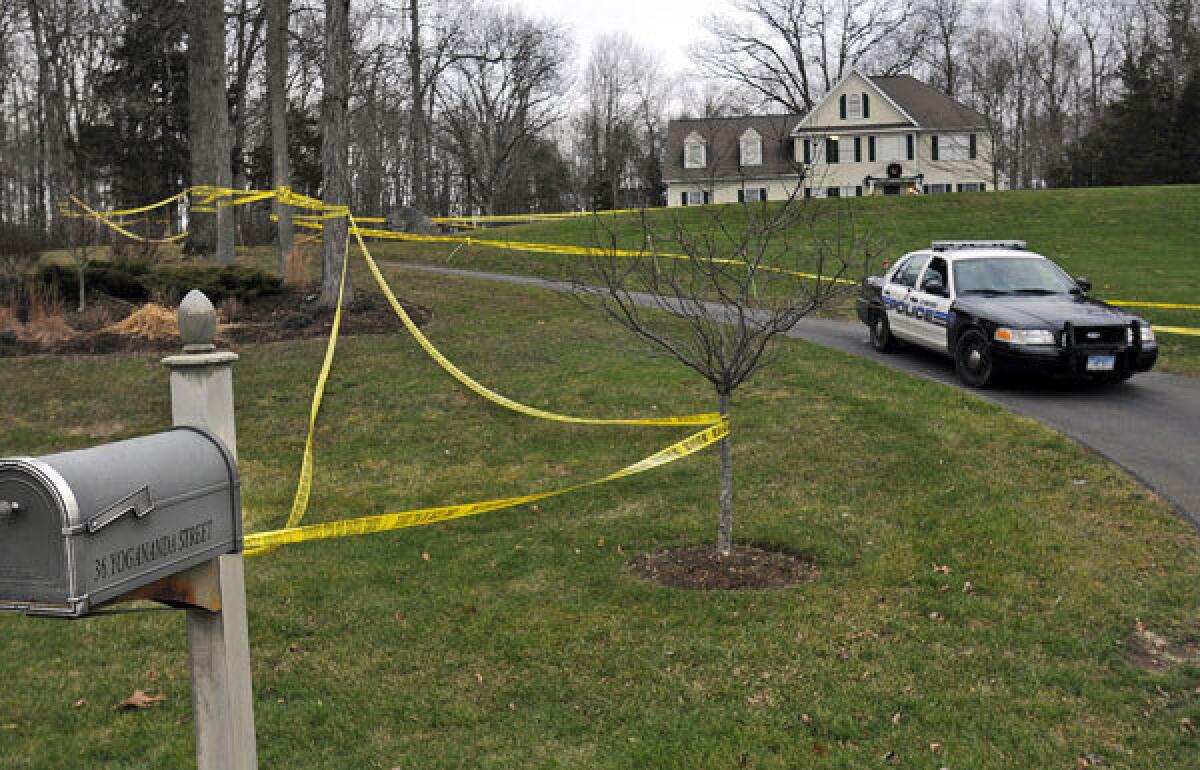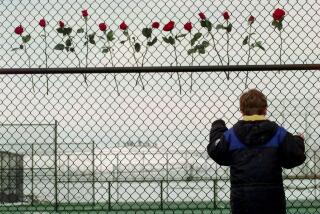Connecticut shooter’s problems all too familiar to many parents

Elizabeth Guzman will never forget the day last year when she came home from work to find her 25-year-old stepson, Bobby, holding a knife. In a threatening voice, he asked her, “Where are you from?”
“I broke out in a sweat,” she said. “I thought, ‘I’m alone in the house. If anything happens, no one will know.’”
Guzman tricked him into putting the knife down by handing him two chocolate chip cookies, one for each hand. But she fears it’s only a matter of time until it happens again. Bobby has a history of violence and a diagnosis of paranoid schizophrenia.
For parents around the U.S., the mass school shooting in Connecticut fueled fears about how to ensure the safety of their own children. But for parents like Guzman, the tragedy affected them in a different and terrifying way, as they saw signs of their children in the shooter.
“It resonates deeply,” said Evy Lowe of the Child and Family Guidance Center, a Los Angeles-area nonprofit that provides mental health services to families. Lowe said parents may feel either, “Thank God that wasn’t my child who did that” or, “Oh my God, it could be my child who could do that.”
Guzman and other parents say getting the right help for their mentally ill children is a constant and emotionally exhausting challenge. Schools are often unprepared to cope with their illnesses, which can include schizophrenia, bipolar disorder and borderline personality disorder, according to experts and advocates. And years of state and local budget cuts have led to fewer mental health services nationwide.
There are roughly 7,500 child psychiatrists in the nation — about a third of what is needed, according to the National Alliance on Mental Illness. There is also a nationwide shortage of psychiatric beds, leading to waiting lists that can last several months, according to the organization.
Without available resources, families often have to wait until their children or adolescents have a breakdown or a violent episode — and then they call 911, said Darcy Gruttadaro, director of the organization’s Child and Adolescent Action Center.
“They really have nowhere else to turn,” she said. “The systems designed to serve their children are not equipped.”
Since being diagnosed at 17, Bobby has been in and out of psychiatric hospitals, jails and homeless shelters. Once he went missing for nine months. Guzman constantly worries about him getting hurt or hurting others. He is almost 6 feet tall and weighs about 260 pounds.
Guzman, 57, spoke on the condition that Bobby’s last name be withheld and that she be identified with her maiden name. The violence is unpredictable and illogical, she said. Bobby has attacked his father numerous times. “Anything could trigger it,” she said.
Guzman said she has had to lock up anything in their Los Angeles home that could be used as a weapon — knives, can openers, plastic forks. She only allows her son to wear shoes that slip on because she worries he could choke somebody with the laces.
Bobby is on medication and regularly sees a psychiatrist, but Guzman says that isn’t enough. He is waiting for a bed in a locked facility. “If he misses even a day of his medication, his personality changes,” she said.
More education and research are needed to diagnose patients early and prevent violent incidents, said Sheela Gade, a child and adolescent psychiatrist in San Marino. “That will help increase awareness and help identify some of the triggers,” she said.
Sometimes, school staff and pediatricians don’t take seriously parents’ initial concerns about their children, leading to delays in getting help, advocates say. And once the youths turn 18, the process becomes even tougher because parents no longer have legal authority over them.
The ongoing stigma about mental illness also creates a barrier to seeking services, advocates say. Parents feel shame and embarrassment and quickly become overwhelmed by both the illness and the isolation.
“It leaves families feeling helpless,” said Gruttadaro. “It’s like seeing your child bleeding without being able to provide any kind of relief.”
Joanie Laughlin, 63, said her life changed in an instant after her son, Jake Bonaventura, had a psychotic break. With no warning, he violently attacked his stepfather and had to be taken away in handcuffs.
“It was just the most terrifying thing,” she said. “It came out of nowhere.”
The behavior was completely out of character, she said. In high school, Bonaventura was a good student and involved in many activities: sports, the student council and the yearbook. But a few years later, he started acting withdrawn. And then came the attack.
Laughlin, who lives in West Los Angeles, said she didn’t want to admit what was happening, even after her son was diagnosed with paranoid schizophrenia.
“It was the hardest thing to even say the words, but I was afraid of my child,” she said. “I had never seen the ability in my son to be violent. All of a sudden I saw him in a completely different light.”
Laughlin said she didn’t know where to go or how to ensure that he wouldn’t try to hurt anyone again. Her son spent time in inpatient hospitals and outpatient facilities and met with numerous psychiatrists. It took years to find the right combination of medications. Now, he is 29 and much better, she said.
When she heard about the shootings at Sandy Hook, Laughlin said she felt horrible for the victims but also empathy for the shooter’s family. Like many parents of mentally ill children, Laughlin says she hopes the recent shooting will lead to more discussion among policymakers about investing more in mental health services.
In the meantime, the tragedy served as a sobering reminder of the uncertainty of their and their children’s lives, said Ellen Linder, executive director of United Parents, a Ventura County organization that supports families of children with mental illness.
“You never know how far the kids are going to go with their threats,” she said.
Linder added that she was glad the nation was restarting the conversation about mental illness, but said the key would be keeping that going. “We get up in arms about it, and then we forget about it again,” she said.
More to Read
The biggest entertainment stories
Get our big stories about Hollywood, film, television, music, arts, culture and more right in your inbox as soon as they publish.
You may occasionally receive promotional content from the Los Angeles Times.





